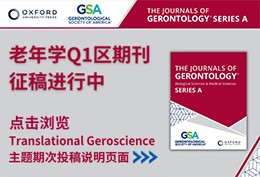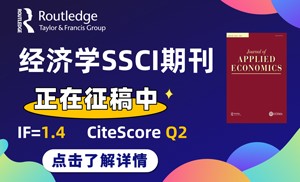-
Damage-based initiation and growth of cracks in compacted graphite iron: Comparison of numerical strategies for realistic morphology Int. J. Damage Mech. (IF 4.0) Pub Date : 2025-04-11 Xingling Luo, Xinrui Huang, Konstantinos P Baxevanakis, Phani S Karamched, Vadim V Silberschmidt
Compacted graphite iron (CGI) is widely used in automotive engines thanks to its excellent castability and thermal conductivity. Despite extensive research, the influence of its microstructure on the fracture behaviour has not been fully elucidated. In this work, four different damage models with realistic and simplified morphologies are compared. The developed models consider the effect of graphite-particle
-
Integral parameterization of volumetric domains via deep neural networks Comput. Methods Appl. Mech. Eng. (IF 6.9) Pub Date : 2025-04-10 Zheng Zhan, Wenping Wang, Falai Chen
Isogeometric Analysis (IGA) is a promising technique that integrates geometric modeling with numerical analysis. An essential step in IGA is domain parameterization, which aims to establish a parametric representation for a given computational domain. Specifically, it involves defining a spline-based mapping from the standard parametric domain to the computational domain. Typically, domain parameterization
-
Orientation-aware interaction-based deep material network in polycrystalline materials modeling Comput. Methods Appl. Mech. Eng. (IF 6.9) Pub Date : 2025-04-10 Ting-Ju Wei, Tung-Huan Su, Chuin-Shan Chen
Multiscale simulations are indispensable for connecting microstructural features to the macroscopic behavior of polycrystalline materials, but their high computational demands limit their practicality. Deep material networks (DMNs) have been proposed as efficient surrogate models, yet they fall short of capturing texture evolution. To address this limitation, we propose the orientation-aware interaction-based
-
Efficient Bayesian inversion for simultaneous estimation of geometry and spatial field using the Karhunen-Loève expansion Comput. Methods Appl. Mech. Eng. (IF 6.9) Pub Date : 2025-04-10 Tatsuya Shibata, Michael C. Koch, Iason Papaioannou, Kazunori Fujisawa
Detection of abrupt spatial changes in physical properties representing unique geometric features such as buried objects, cavities, and fractures is an important problem in geophysics and many engineering disciplines. In this context, simultaneous spatial field and geometry estimation methods that explicitly parameterize the background spatial field and the geometry of the embedded anomalies are of
-
Patch based unbiased 3D frictional contact formulation for finite element algorithms Comput. Methods Appl. Mech. Eng. (IF 6.9) Pub Date : 2025-04-10 Indrajeet Sahu, Nik Petrinic
A new truly unbiased frictional contact formulation exclusively leveraging the midplane-based segment-to-segment (STS) interaction with a predictor–corrector approach is presented. Unlike the traditional master–slave based dual pass approaches, this formulation only requires a single pass providing a computational advantage in comparison. This work details the development of a penalty-regularised frictional
-
A hybrid discrete and continuum framework for multiscale modeling of granular media Comput. Methods Appl. Mech. Eng. (IF 6.9) Pub Date : 2025-04-10 Maytee Chantharayukhonthorn, Peter Yichen Chen, Yonghao Yue, Eitan Grinspun, Ken Kamrin
This work provides key advancements to a nascent simulation approach (Yue et al., 2018; Chen et al., 2021), which hybridizes two common simulation methodologies: discrete element methods and continuum methods. Discrete element methods (DEM), commonly used in granular media simulation, model every single micro-constituent and are thus accurate; however, in light of the enormous number of particles frequently
-
An integral method for Reliability-Based design Optimization Comput. Methods Appl. Mech. Eng. (IF 6.9) Pub Date : 2025-04-09 Zhenzhong Chen, Wenhao Wang, Qianghua Pan, Guangming Guo, Xiaoke Li, Ge Chen, Xuehui Gan
In Reliability-Based design Optimization (RBDO), the aim is to develop an optimal design characterized by high reliability through fulfilling design requirements at the targeted probability threshold. The goal of reliability optimization is to obtain excellent algorithms by focusing on evaluation and optimization. In RBDO, due to the selection of evaluation methods and the problem of updating reliable
-
A stabilized LSMPS for three-dimensional complex free-surface flow with moving wall Comput. Methods Appl. Mech. Eng. (IF 6.9) Pub Date : 2025-04-09 Xiaoxing Liu, Siwei He, Wei Huang, Xi Wang
This study proposes a stabilized LSMPS method for simulating free surface flows with moving wall. In this stabilized LSMPS method, a novel wall velocity model is proposed for velocity divergence calculation and velocity interpolation. The proposed method also combines type-A and type-B LSMPS to enhance both accuracy and stability. Type-A LSMPS is applied to internal particles, while type-B scheme is
-
Stochastic fracture and fatigue analysis in elasto-plastic materials via virtual modelling techniques Comput. Methods Appl. Mech. Eng. (IF 6.9) Pub Date : 2025-04-09 Yiyang Liu, Yuan Feng, Di Wu, Xiaojun Chen, Chengwei Yang, Wei Gao
This study presents a stochastic elasto-plastic fracture and fatigue analysis framework, leveraging the phase field method to address the complex fatigue phenomenon. Fatigue behaviour in elasto-plastic materials, governed by the intricate process of plastic damage accumulation, remains pivotal for precisely evaluating structural load-bearing capacities. Transitioning from static fracture analysis to
-
Stochastic reconstruction of multiphase composite microstructures using statistics-encoded neural network for poro/micro-mechanical modelling Comput. Methods Appl. Mech. Eng. (IF 6.9) Pub Date : 2025-04-09 Jinlong Fu, Wei Tan
A fundamental understanding of the microstructure–property relationships (MPRs) is crucial for optimising the performances and functionality of multiphase composites. Image-based poro/micro-mechanical modelling offers a powerful non-invasive method to explore MPRs, but the inherent randomness in multiphase composites often necessitates extensive datasets of 3D digital microstructures for reliable statistical
-
Space–time isogeometric topology optimization with additive manufacturing constraints Comput. Methods Appl. Mech. Eng. (IF 6.9) Pub Date : 2025-04-09 Li Yang, Weiming Wang, Ye Ji, Chun-Gang Zhu, Charlie C.L. Wang
This paper presents a novel space–time isogeometric topology optimization (ITO) framework for additive manufacturing, enabling concurrent optimization of structural shape and fabrication sequence with accurate geometric representation. The method integrates a density distribution function with a pseudo-time function to optimize build sequences for complex structures, with an objective function that
-
A hybrid deep learning approach for the design of 2D Auxetic Metamaterials Comput. Methods Appl. Mech. Eng. (IF 6.9) Pub Date : 2025-04-09 Chonghui Zhang, Yaoyao Fiona Zhao
Mechanical metamaterials feature unique and complex architectures that produce properties not present in their base materials. Traditional design methods often fall short in exploring the vast 2D design space efficiently, necessitating advanced techniques that can accommodate the design of these metamaterials. This paper presents a comprehensive framework for the design and evaluation of 2D metamaterials
-
A network model for handling boundary conditions in stochastic partial differential equations Comput. Methods Appl. Mech. Eng. (IF 6.9) Pub Date : 2025-04-09 Jian Wang, Qingmiao Zhao, Witold Pedrycz, Sergey V. Ablameyko, Nikhil R. Pal
Stochastic partial differential equations (SPDEs) are commonly encountered in the realms of engineering and computational science. Solving SPDEs can be regarded as quantifying the impact of stochastic inputs on system responses or quantities of interest, which constitutes performing uncertainty quantification (UQ) for SPDEs. Recently, the application of neural networks to solve SPDEs has attracted
-
Stress-constrained versus fracture-based topology optimization: A comparative study Comput. Methods Appl. Mech. Eng. (IF 6.9) Pub Date : 2025-04-09 Yingqi Jia, Rahul Dev Kundu, Xiaojia Shelly Zhang
Stress-constrained and fracture-based topology optimization are both popular methods to enhance fracture resistance in engineering structures and materials. However, their comparative advantages and applicability to various design scenarios remain underexplored. In this study, we revisit both formulations and systematically compare them by analyzing their underlying physics and capabilities. The stress-constrained
-
Invariant-domain preserving and locally mass conservative approximation of the Lagrangian hydrodynamics equations Comput. Methods Appl. Mech. Eng. (IF 6.9) Pub Date : 2025-04-09 Jean-Luc Guermond, Bojan Popov, Laura Saavedra, Madison Sheridan
In this paper we construct an explicit approximation for the Lagrangian hydrodynamics equations equipped with an arbitrary equation of state. The approximation of the state variable is done with piecewise constant finite elements and the approximation of the mesh motion is done with higher-order continuous finite elements. The method is invariant-domain preserving and locally mass conservative. The
-
A multi-resolution parameterized level set method based on quasi-smooth manifold element Comput. Methods Appl. Mech. Eng. (IF 6.9) Pub Date : 2025-04-08 Shanyao Deng, Weibin Wen, Pan Wang, Shengyu Duan, Jun Liang
This paper introduces a novel multi-resolution topology optimization method that combines the parametric level set method (PLSM) and quasi-smooth manifold element (QSME) [1]. The QSME has high accuracy and high-order continuity, and its degrees of freedoms have clear physical meanings. By employing the QSME for structural analysis on a coarser analysis mesh and PLSM for updating design variables on
-
A novel data-driven digital reconstruction method for polycrystalline microstructures Comput. Methods Appl. Mech. Eng. (IF 6.9) Pub Date : 2025-04-08 Bingbing Chen, Dongfeng Li, Liyuan Wang, Xiangyun Ge, Chenfeng Li
Data-driven digital reconstruction is a power tool for building digital microstructures for such heterogeneous materials as porous media and composites. It uses scanned images as reference and generates digital microstructures through optimisation procedures or computer vision methods. However, data-driven digital reconstruction methods do not apply to polycrystalline microstructures because their
-
Two-level random feature methods for elliptic partial differential equations over complex domains Comput. Methods Appl. Mech. Eng. (IF 6.9) Pub Date : 2025-04-08 Yifei Sun, Jingrun Chen
Solving partial differential equations (PDEs) is widely used in scientific and engineering applications. Challenging scenarios include problems with complicated solutions and/or over complex domains. To solve these issues, tailored approximation space and specially designed meshes are introduced in traditional numerical methods, both of which require significant human efforts and computational costs
-
Hybrid method of SIMP and SAIP for reliability-based topology optimization considering strength failure under load uncertainty Comput. Methods Appl. Mech. Eng. (IF 6.9) Pub Date : 2025-04-04 Zhenzeng Lei, Zeyu Deng, Yuan Liang, Guohai Chen, Rui Li, Dixiong Yang
Reliability-based topology optimization (RBTO) considering strength failure under load uncertainty can yield the optimum topological designs that significantly enhance the structural safety. By employing stress-based performance functions, this study formulates the problem as minimizing an objective function subject to a system reliability constraint. Load uncertainty is characterized by treating both
-
Coupling of data-driven and model-driven computing within non-matching meshes Comput. Methods Appl. Mech. Eng. (IF 6.9) Pub Date : 2025-04-03 Xiaowei Bai, Jie Yang, Qun Huang, Wei Huang, Huicui Li, Noureddine Damil, Heng Hu
This work aims to couple distance-minimizing data-driven computing with model-driven computing (standard constitutive model-based simulations), allowing for non-matching interfaces between computational regions meshed with both full and reduced finite elements. Specifically, data-driven (DD) computing is employed for regions where the material constitutive models are difficult to determine, whilst
-
AEK-MFIS: An adaptive ensemble of Kriging models based on multi-fidelity simulations and importance sampling for small failure probabilities Comput. Methods Appl. Mech. Eng. (IF 6.9) Pub Date : 2025-04-03 Wei Zhang, Zhonglai Wang, Haoyu Wang, Zhangwei Li, Yunfei Wang, Ziyi Zhao
The reliability analysis methods based on the surrogate model significantly reduce the number of true performance function calls. However, existing reliability analysis methods ignore Low-Fidelity (LF) information in the assessment of reliability analysis, which consequently leads to the difficulty in efficiently and accurately estimating the small failure probabilities with time-consuming High-Fidelity
-
A Bayesian learning approach for dynamic parameter identification and its applications in industrial robotic systems Comput. Methods Appl. Mech. Eng. (IF 6.9) Pub Date : 2025-04-03 Xing-ao Li, Dequan Zhang, Xinyu Jia, Xu Han, Guosong Ning, Qing Li
Accurate dynamic modeling is essential for implementing model-based control strategies to enhance the performance of industrial robots. However, conventional dynamic parameter identification methods suffer from several limitations, such as insufficient accuracy, lack of physical feasibility assurance, and inadequate utilization of prior information. More importantly, the existing methods fail to quantify
-
A graph neural network surrogate model for multi-objective fluid-acoustic shape optimization Comput. Methods Appl. Mech. Eng. (IF 6.9) Pub Date : 2025-04-02 Farnoosh Hadizadeh, Wrik Mallik, Rajeev K. Jaiman
This study presents a graph neural network (GNN)-based surrogate modeling approach for multi-objective fluid-acoustic shape optimization. The proposed GNN model transforms mesh-based simulations into a computational graph, enabling steady-state prediction of pressure and velocity fields around varying geometries subjected to different operating conditions. We employ signed distance functions to implicitly
-
Variational formulation based on duality to solve partial differential equations: Use of B-splines and machine learning approximants Comput. Methods Appl. Mech. Eng. (IF 6.9) Pub Date : 2025-04-02 N. Sukumar, Amit Acharya
Many partial differential equations (PDEs) such as Navier–Stokes equations in fluid mechanics, inelastic deformation in solids, and transient parabolic and hyperbolic equations do not have an exact, primal variational structure. Recently, a variational principle based on the dual (Lagrange multiplier) field was proposed. The essential idea in this approach is to treat the given PDEs as constraints
-
3D XFEM for fluid-driven fracturing of layered anisotropic rock Comput. Methods Appl. Mech. Eng. (IF 6.9) Pub Date : 2025-04-01 XiuYuan Chen, Hao Yu, YiLun Zhong, Quan Wang, HengAn Wu
We propose a novel planar 3D extended finite element method (XFEM) for fluid-driven fracturing of layered rocks, where the material properties and fracture toughness are anisotropic. The crack tip singular functions vary along the curved fracture front, which stems from differing crack tip asymptotes caused by variations in local material properties. These functions in three-dimensional anisotropic
-
Space–time Isogeometric Analysis of cardiac electrophysiology Comput. Methods Appl. Mech. Eng. (IF 6.9) Pub Date : 2025-04-01 Paola F. Antonietti, Luca Dedè, Gabriele Loli, Monica Montardini, Giancarlo Sangalli, Paolo Tesini
This work proposes a stabilized space–time method for the monodomain equation coupled with the Rogers–McCulloch ionic model, which is widely used to simulate electrophysiological wave propagation in the cardiac tissue. By extending the Spline Upwind method and exploiting low-rank matrix approximations, as well as preconditioned solvers, we achieve both significant computational efficiency and accuracy
-
A physics-informed 3D surrogate model for elastic fields in polycrystals Comput. Methods Appl. Mech. Eng. (IF 6.9) Pub Date : 2025-04-01 Lucas Monteiro Fernandes, Samy Blusseau, Philipp Rieder, Matthias Neumann, Volker Schmidt, Henry Proudhon, François Willot
We develop a physics-informed neural network pipeline for solving linear elastic micromechanics in three dimensions, on a statistical volume element (SVE) of a polycrystalline material with periodic geometry. The presented approach combines a convolutional neural network containing residual connections with physics-informed non-trainable layers. The latter are introduced to enforce the strain field
-
Thermodynamically-Informed Iterative Neural Operators for heterogeneous elastic localization Comput. Methods Appl. Mech. Eng. (IF 6.9) Pub Date : 2025-04-01 Conlain Kelly, Surya R. Kalidindi
Engineering problems frequently require solution of governing equations with spatially-varying, discontinuous coefficients. Mapping large ensembles of coefficient fields to solutions can become a major computational bottleneck using traditional numerical solvers, even for linear elliptic problems. Machine learning surrogates such as neural operators often struggle to fit these maps due to sharp transitions
-
An adaptive and stability-promoting layerwise training approach for sparse deep neural network architecture Comput. Methods Appl. Mech. Eng. (IF 6.9) Pub Date : 2025-04-01 C.G. Krishnanunni, Tan Bui-Thanh
This work presents a two-stage adaptive framework for progressively developing deep neural network (DNN) architectures that generalize well for a given training data set. In the first stage, a layerwise training approach is adopted where a new layer is added each time and trained independently by freezing parameters in the previous layers. We impose desirable structures on the DNN by employing manifold
-
Neural networks meet phase-field: A hybrid fracture model Comput. Methods Appl. Mech. Eng. (IF 6.9) Pub Date : 2025-03-30 Franz Dammaß, Karl A. Kalina, Markus Kästner
We present a hybrid phase-field model of fracture at finite deformation and its application to quasi-incompressible, hyperelastic rubber. The key idea is to combine the predictive capability of the well-established phase-field approach to fracture with a physics-augmented neural network (PANN) that serves as a flexible, high-fidelity model of the response of the bulk material. To this end, recently
-
PIGODE: A novel model for efficient surrogate modeling in complex geometric structures Comput. Methods Appl. Mech. Eng. (IF 6.9) Pub Date : 2025-03-29 Chengyu Lu, Zhaoxi Hong, Xiuju Song, Zhixin Liu, Bingtao Hu, Yixiong Feng, Jianrong Tan
Physics-Informed Neural Network (PINN), as a novel neural network model, is known for its strong interpretability and generalization capabilities, making it widely used in surrogate models and various engineering scenarios. While traditional PINN has achieved good results in simple geometric scenarios, there is limited research on its application to complex geometric structures. Additionally, PINN
-
A new paradigm for hybrid reliability-based design optimization: From β-circle to β-cylinder Comput. Methods Appl. Mech. Eng. (IF 6.9) Pub Date : 2025-03-29 Peng Hao, Zehao Cui, Bingyi Du, Hao Yang, Yue Zhang
A new paradigm for hybrid reliability-based design optimization (HRBDO) is proposed. The key innovation lies in expanding the traditional β-circle into a β-cylinder along the interval dimensions, integrating both random and interval dimensional information. Building upon this theoretical foundation, a novel interval-based dimensional expansion β-cylinder active learning (IBAL) method is proposed, transforming
-
A generalized non-hourglass updated Lagrangian formulation for SPH solid dynamics Comput. Methods Appl. Mech. Eng. (IF 6.9) Pub Date : 2025-03-28 Shuaihao Zhang, Dong Wu, Sérgio D.N. Lourenço, Xiangyu Hu
Hourglass modes, characterized by zigzag particle and stress distributions, are a common numerical instability encountered when simulating solid materials with updated Lagrangian smoothed particle hydrodynamics (ULSPH). While recent solutions have effectively addressed this issue in elastic materials using an essentially non-hourglass formulation, extending these solutions to plastic materials with
-
The Shifted Boundary Method for contact problems Comput. Methods Appl. Mech. Eng. (IF 6.9) Pub Date : 2025-03-28 Kangan Li, Andrea Gorgi, Riccardo Rossi, Guglielmo Scovazzi
We propose an embedded algorithm for contact mechanics based on the Shifted Boundary Method. The contact conditions are applied on a surrogate contact surface in proximity of the true contact surface and Taylor expansions are used to change (shift) both their value and location. This approach is robust, accurate, and avoids integrating the variational formulation on cut cells and related numerical
-
A model-constrained discontinuous Galerkin Network (DGNet) for compressible Euler equations with out-of-distribution generalization Comput. Methods Appl. Mech. Eng. (IF 6.9) Pub Date : 2025-03-28 Hai Van Nguyen, Jau-Uei Chen, Tan Bui-Thanh
Real-time accurate solutions of large-scale complex dynamical systems are critically needed for control, optimization, uncertainty quantification, and decision-making in practical engineering and science applications, particularly in digital twin contexts. Recent research on hybrid approaches combining numerical methods and machine learning in end-to-end training has shown significant improvements
-
SK-PINN: Accelerated physics-informed deep learning by smoothing kernel gradients Comput. Methods Appl. Mech. Eng. (IF 6.9) Pub Date : 2025-03-27 Cunliang Pan, Chengxuan Li, Yu Liu, Yonggang Zheng, Hongfei Ye
The automatic differentiation (AD) in the vanilla physics-informed neural networks (PINNs) is the computational bottleneck for the high-efficiency analysis. The concept of derivative discretization in smoothed particle hydrodynamics (SPH) can provide an accelerated training method for PINNs. In this paper, smoothing kernel physics-informed neural networks (SK-PINNs) are established, which solve differential
-
Populating cellular metamaterials on the extrema of attainable elasticity through neuroevolution Comput. Methods Appl. Mech. Eng. (IF 6.9) Pub Date : 2025-03-27 Maohua Yan, Ruicheng Wang, Ke Liu
The trade-offs between different mechanical properties of materials pose fundamental challenges in engineering material design, such as balancing stiffness versus toughness, weight versus energy-absorbing capacity, and among the various elastic coefficients. Although gradient-based topology optimization approaches have been effective in finding specific designs and properties, they are not efficient
-
Information entropy regularization method for structural identification with large-scale damaged parameters Comput. Methods Appl. Mech. Eng. (IF 6.9) Pub Date : 2025-03-27 Yifei Wang, Xiaojun Wang, Geyong Cao
With the advancement of structural health monitoring technology, the increasing precision in modeling, scalability of model parameters, and complexity of external environments have introduced significant challenges to damage identification. Notably, the ill-posed nature of large-scale parameter identification from refined models has become a critical technical challenge. Regularization methods are
-
Teaching artificial intelligence to perform rapid, resolution-invariant grain growth modeling via Fourier Neural Operator Comput. Methods Appl. Mech. Eng. (IF 6.9) Pub Date : 2025-03-27 Iman Peivaste, Ahmed Makradi, Salim Belouettar
Microstructural evolution, particularly grain growth, plays a critical role in shaping the physical, optical, and electronic properties of materials. Traditional phase-field modeling accurately simulates these phenomena but is computationally intensive, especially for large systems and fine spatial resolutions. While machine learning approaches have been employed to accelerate simulations, they often
-
Frictional contact between solids: A fully Eulerian phase-field approach Comput. Methods Appl. Mech. Eng. (IF 6.9) Pub Date : 2025-03-27 Flavio Lorez, Mohit Pundir
Recent advancements have demonstrated that fully Eulerian methods can effectively model frictionless contact between deformable solids. Unlike traditional Lagrangian approaches, which require contact detection and resolution algorithms, the Eulerian framework utilizes a single, fixed spatial mesh combined with a diffuse interface phase-field approach, simplifying contact resolution significantly. Moreover
-
Odd elasticity of cylindrical shells and Kirchhoff–Love plates under classic continuum theory J. Mech. Phys. Solids (IF 5.0) Pub Date : 2025-03-27 Zachary Wolfgram, Martin Ostoja-Starzewski
Odd elastic behavior is investigated in 2d structures with only the odd elastic parameter K0 under classic continuum theory. For the Kirchhoff–Love plate with a constant K0, the displacement formulation is independent of the odd parameter, whereas the moment formulation shows dependence. A simply-supported plate under a uniformly distributed load and center point load is investigated using the displacement
-
Key conditional quotient of random finite element model under measurement conditions Comput. Methods Appl. Mech. Eng. (IF 6.9) Pub Date : 2025-03-26 Yuelin Zhao, Feng Wu
Uncertainty and nonlinearity in real-world structures like complex connections and composite materials often impede the establishment of accurate finite element models, requiring measurement assistance to estimate the actual structural response. However, accurately and efficiently estimating the structural response in the face of random measurement errors, structural uncertainty, and nonlinear effects
-
Data-driven elastoplastic constitutive modelling with physics-informed RNNs using the Virtual Fields Method for indirect training Comput. Methods Appl. Mech. Eng. (IF 6.9) Pub Date : 2025-03-26 Rúben Lourenço, Petia Georgieva, A. Andrade-Campos
The increasing demand for accurate material behaviour data in engineering simulations has exposed the limitations of traditional constitutive models. Although recent advances in full-field measurement techniques provide more detailed material characterization, conventional approaches still heavily rely on explicit assumptions and labour-intensive experimentation. This paper revisits the indirect training
-
A competitive baseline for deep learning enhanced data assimilation using conditional Gaussian ensemble Kalman filtering Comput. Methods Appl. Mech. Eng. (IF 6.9) Pub Date : 2025-03-26 Zachariah Malik, Romit Maulik
Ensemble Kalman Filtering (EnKF) is a popular technique for data assimilation, with far ranging applications. However, the vanilla EnKF framework is not well-defined when perturbations are nonlinear. We study two non-linear extensions of the vanilla EnKF – dubbed the conditional-Gaussian EnKF (CG-EnKF) and the normal score EnKF (NS-EnKF) – which sidestep assumptions of linearity by constructing the
-
-
Customized Gaussian process for representing polycrystalline texture Comput. Methods Appl. Mech. Eng. (IF 6.9) Pub Date : 2025-03-25 Bingqian Li, Piotr Breitkopf, Ludovic Cauvin
A customized Gaussian Process Regression (GPR) model is developed to reconstruct Pole Density Functions in texture analysis. The model integrates spherical-periodic distance measures with conventional stationary kernels, adapting the GPR framework to capture localized texture features. A key contribution is the introduction of a log-linear data transformation, which enforces the non-negativity of both
-
RoePINNs: An integration of advanced CFD solvers with Physics-Informed Neural Networks and application in arterial flow modeling Comput. Methods Appl. Mech. Eng. (IF 6.9) Pub Date : 2025-03-25 J. Orera, J. Ramírez, P. García-Navarro, J. Murillo
The characterization of forward and inverse problems describing blood flow dynamics plays a decisive role in numerous biomedical applications. These systems can be modeled using one-dimensional (1D) approaches leading to a hyperbolic system of equations with source terms. Their numerical discretization, associated to the spatial variation of mechanical and geometrical properties, requires advanced
-
Energy stable and structure-preserving algorithms for the stochastic Galerkin system of 2D shallow water equations Comput. Methods Appl. Mech. Eng. (IF 6.9) Pub Date : 2025-03-24 Yekaterina Epshteyn, Akil Narayan, Yinqian Yu
Shallow water equations (SWE) are fundamental nonlinear hyperbolic PDE-based models in fluid dynamics that are essential for studying a wide range of geophysical and engineering phenomena. Therefore, stable and accurate numerical methods for SWE are needed. Although some algorithms are well studied for deterministic SWE, more effort should be devoted to handling the SWE with uncertainty. In this paper
-
Multi-objective Bayesian optimisation of spinodoid cellular structures for crush energy absorption Comput. Methods Appl. Mech. Eng. (IF 6.9) Pub Date : 2025-03-24 Hirak Kansara, Siamak F. Khosroshahi, Leo Guo, Miguel A. Bessa, Wei Tan
In the pursuit of designing safer and more efficient energy-absorbing structures, engineers must tackle the challenge of improving crush performance while balancing multiple conflicting objectives, such as maximising energy absorption and minimising peak impact forces. Accurately simulating real-world conditions necessitates the use of complex material models to replicate the non-linear behaviour of
-
EM-based fast uncertainty quantification for bayesian multi-setup operational modal analysis Comput. Methods Appl. Mech. Eng. (IF 6.9) Pub Date : 2025-03-22 Wei Zhu, Binbin Li, Zuo Zhu
The current Bayesian FFT algorithm relies on direct differentiation to obtain the posterior covariance matrix (PCM), which is time-consuming, memory-intensive, and hard to code, especially for the multi-setup operational modal analysis (OMA). Aiming at accelerating the uncertainty quantification in multi-setup OMA, an expectation-maximization (EM)-based algorithm is proposed by reformulating the Hessian
-
Boundary settings for seismic dynamic analysis of rock masses using the nodal-based continuous-discontinuous deformation analysis method Comput. Methods Appl. Mech. Eng. (IF 6.9) Pub Date : 2025-03-22 Yang Xia, Yongtao Yang, Hong Zheng, He Liu, Shuilin Wang
The nodal-based continuous-discontinuous deformation analysis method (NCDDAM) proposed by the authors has demonstrated its potential for dynamic analysis of rock masses with discontinuities. However, the existing boundary conditions applied in NCDDAM are not suitable for seismic dynamic analysis, as they can cause fictitious reflected waves. To further apply the NCDDAM for seismic dynamic analysis
-
On a canonical interface model with application to micro-heterogeneous elastic solids Comput. Methods Appl. Mech. Eng. (IF 6.9) Pub Date : 2025-03-22 Ali Javili, Fredrik Larsson, Kenneth Runesson, Paul Steinmann
Finite-thickness interphases between different constituents in heterogeneous materials are often replaced by a zero-thickness interface model. Due to increasing area-to-volume ratio with decreasing size of microstructures, interfaces introduce a physical length into the effective response at the macroscale. The most commonly studied interface models are the cohesive interface model and the elastic
-
The Lagrangian-Eulerian described Particle Flow Topology Optimization (PFTO) approach with isogeometric material point method Comput. Methods Appl. Mech. Eng. (IF 6.9) Pub Date : 2025-03-22 Daji Lin, Liang Gao, Jie Gao
Recently, several topology optimization methods in the Lagrangian or Eulerian description has accepted a wide of discussions, which have been applied to several design problems. In the current work, the primary intention is to propose the Particle Flow Topology Optimization (PFTO) approach in a Lagrangian-Eulerian description, which can sufficiently unify their unique characteristics and superiorities
-
Research on the internal and external synergistic strengthening mechanism of fatigue performance of austenitic stainless steel Int. J. Fatigue (IF 5.7) Pub Date : 2025-03-22 Qingfan Xie, Hongxia Zhang, Shubang Wang, Zhifeng Yan
In this study, the effects of the synergy between pre-tensioning and surface mechanical rolling on the microstructure and fatigue performance of 304 stainless steel were discussed. The 304 stainless steel was subjected to pre-tensioning treatment, and a transformation in the microstructure was observed, with refinement of the grain size accompanied by the occurrence of martensitic transformation, and
-
The Junction Riemann Problem in 1D shallow water channels including supercritical flow conditions Comput. Methods Appl. Mech. Eng. (IF 6.9) Pub Date : 2025-03-21 Juan Mairal, Javier Murillo, Pilar Garcia-Navarro
This work presents an advancement in solving the Shallow Water Equations (SWE) in one-dimensional (1D) networks of channels using the Junction Riemann Problem (JRP). The necessity for robust solvers for junctions in networks is evident from the extensive literature and the variety of proposed methods. While multidimensional coupled approaches that model junctions as two-dimensional spaces have shown
-
Residual stress-constrained space–time topology optimization for multi-axis additive manufacturing Comput. Methods Appl. Mech. Eng. (IF 6.9) Pub Date : 2025-03-21 Kai Wu, Fred van Keulen, Jun Wu
Residual stresses and distortions are major barriers to the broader adoption of wire arc additive manufacturing. These issues are coupled and arise due to large thermal gradients and phase transformations during the directed energy deposition process. Mitigating distortions may lead to substantial residual stresses, causing cracks in the fabricated components. In this paper, we propose a novel method
-
A multiscale design method using interpretable machine learning for phononic materials with closely interacting scales Comput. Methods Appl. Mech. Eng. (IF 6.9) Pub Date : 2025-03-20 Mary V. Bastawrous, Zhi Chen, Alexander C. Ogren, Chiara Daraio, Cynthia Rudin, L. Catherine Brinson
Manipulating the dispersive characteristics of vibrational waves is beneficial for many applications, e.g., high-precision instruments. architected hierarchical phononic materials have sparked promise tunability of elastodynamic waves and vibrations over multiple frequency ranges. In this article, hierarchical unit-cells are obtained, where features at each length scale result in a band gap within
-
Low-cycle fatigue bond behaviour between sand-coated hybrid FRP tubes and sustainable seawater sea sand concrete Int. J. Fatigue (IF 5.7) Pub Date : 2025-03-20 Jivan Subedi, Anastasios Petsalis, Milad Bazli, Ali Rajabipour, Reza Hassanli, Milad Shakiba
This study examines the bond behaviour of sand-coated hybrid Fibre Reinforced Polymer (HFRP) tubes filled with seawater sea sand concrete (SWSSC) under static and cyclic axial loads through push-out tests. The HFRP tubes, manufactured from glass and carbon fibre-reinforced polymer composites, were tested under incrementally increasing cyclic loading. Four distinct displacement-controlled loading regimes
-
The effect of the effective polymer network on the extremely large deformation and fracture behaviors of polyacrylamide hydrogels J. Mech. Phys. Solids (IF 5.0) Pub Date : 2025-03-20 Jincheng Lei, Yuan Gao, Shuai Xu, Linchun He, Zishun Liu
Current constitutive theories and fracture models face difficulties in capturing the extremely large deformation and fracture behaviors of hydrogels, because the structural and mechanical properties of the effective polymer network dominated in hydrogels are still unknown. In this study, we propose a periodic random network (PRN) method to construct the effective polymer network model of polyacrylamide
-
Grain-size dependence of plastic-brittle transgranular fracture J. Mech. Phys. Solids (IF 5.0) Pub Date : 2025-03-20 Jean-Michel Scherer, Mythreyi Ramesh, Blaise Bourdin, Kaushik Bhattacharya
The role of grain size in determining fracture toughness in metals is incompletely understood with apparently contradictory experimental observations. We study this grain-size dependence computationally by building a model that combines the phase-field formulation of fracture mechanics with dislocation density-based crystal plasticity. We apply the model to cleavage fracture of body-centered cubic

































 京公网安备 11010802027423号
京公网安备 11010802027423号